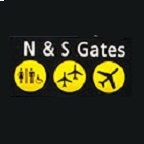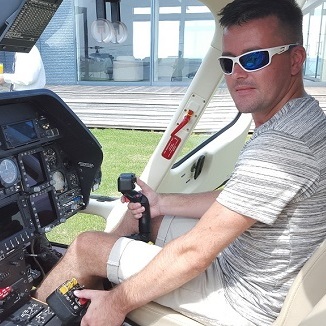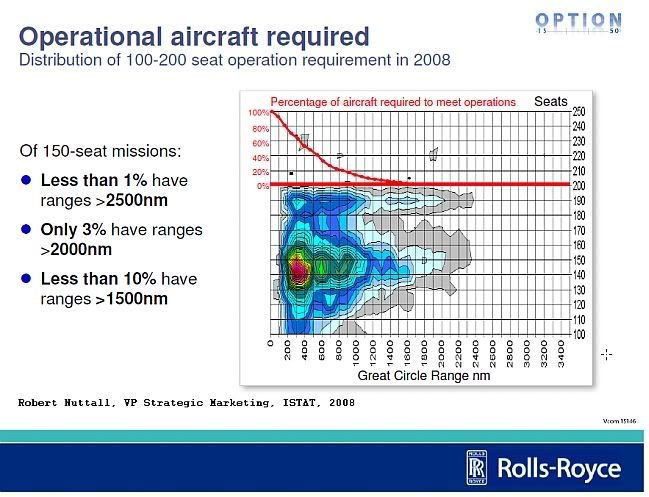Moderators: richierich, ua900, PanAm_DC10, hOMSaR
-
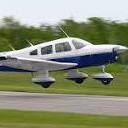
- kitplane01
- Posts: 2917
- Joined:
A320neo/737MAX have too much range?
The 737-100 had a range of 1500NM, and the new MAX can go past 3,500 NM. This is because the engines have much more thrust (from 15,000 lbs to 27,000 lbs so it can carry more fuel, and the engines are much more fuel efficient. The A320 history is similar.
For most flights, these planes have an excess of range capability, which means a reduced efficiency. A "right sized" plane might have the same passenger capacity, but a range of only 1,500 nm. It would require a lower maximum possible gross weight, and therefore a lighter structure and smaller wings. It would be more efficient at these shorter flights (and almost all flights are shorter flights).
How much more efficiency might a "right sized" plane have over these planes with their excess range capability?
P.S. Yes, I know the excess range ability is a useful thing to have. I'm just curious what it costs.
For most flights, these planes have an excess of range capability, which means a reduced efficiency. A "right sized" plane might have the same passenger capacity, but a range of only 1,500 nm. It would require a lower maximum possible gross weight, and therefore a lighter structure and smaller wings. It would be more efficient at these shorter flights (and almost all flights are shorter flights).
How much more efficiency might a "right sized" plane have over these planes with their excess range capability?
P.S. Yes, I know the excess range ability is a useful thing to have. I'm just curious what it costs.
-

- 32andBelow
- Posts: 6736
- Joined:
Re: A320neo/737MAX have too much range?
Well how many carriers only fly sectors under 1500nm? It would mean that Alaska, Southwest, Westjet, Virgin, Jetblue, etc could not operate single fleet types.
-
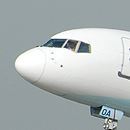
- PatrickZ80
- Posts: 5801
- Joined:
Re: A320neo/737MAX have too much range?
Maybe not all sectors flown on the 737 are as long as 3.500 NM, but by far most of them are longer than 1.500 NM. From Europe this would mean the Canary Islands, a popular holiday destination, would be out of range. I think the current 737 really needs it's range. The 737-100 didn't have it, but back then we didn't know any better. Now we do.
Re: A320neo/737MAX have too much range?
As I think you know, Boeing and Airbus are both very deliberate about choosing the range specification for their products, and they do so in the way that their analysis tells them will maximize profitability of the aircraft.
There are three big geographical narrowbody markets (plus, of course, smaller markets all over the rest of the world): North America, Europe, and South/Southeast/East Asia.
Of the three, only Europe has carriers that just don't have any use for longer range in their narrowbody fleets.
Of course, North America has transcontinental and Hawaii flights to worry about, and the MAX/neo are the first narrowbodies more efficient than a 757 that will be able to fly all of those flights without headaches, restrictions, or bad-weather stops. The North America market has looked this way for many years, since 757s started replacing old-generation widebodies on big domestic routes.
But the Asia market is fragmenting just like North America did when the 757 and then the A320/737NG appeared. The neo/MAX will hasten that process, where hub-to-hub routes that have used A330s and 777s will be given higher frequency and split into more point-to-hub routes using narrowbodies. The Asia region is big enough that many players there can easily make use of the 8ish-hour range of the new aircraft. Think more flights between the subcontinent and East Asia, between SE Asia and Oceania, or between far SE Asia and Japan or Korea.
Pair that with the fact that it was considerably less expensive to increase range than to remove significant weight, and the decisions make sense.
I do think that if Bombardier can find the resources to develop a CS500 then that aircraft will be extremely attractive to a lot of European customers.
There are three big geographical narrowbody markets (plus, of course, smaller markets all over the rest of the world): North America, Europe, and South/Southeast/East Asia.
Of the three, only Europe has carriers that just don't have any use for longer range in their narrowbody fleets.
Of course, North America has transcontinental and Hawaii flights to worry about, and the MAX/neo are the first narrowbodies more efficient than a 757 that will be able to fly all of those flights without headaches, restrictions, or bad-weather stops. The North America market has looked this way for many years, since 757s started replacing old-generation widebodies on big domestic routes.
But the Asia market is fragmenting just like North America did when the 757 and then the A320/737NG appeared. The neo/MAX will hasten that process, where hub-to-hub routes that have used A330s and 777s will be given higher frequency and split into more point-to-hub routes using narrowbodies. The Asia region is big enough that many players there can easily make use of the 8ish-hour range of the new aircraft. Think more flights between the subcontinent and East Asia, between SE Asia and Oceania, or between far SE Asia and Japan or Korea.
Pair that with the fact that it was considerably less expensive to increase range than to remove significant weight, and the decisions make sense.
I do think that if Bombardier can find the resources to develop a CS500 then that aircraft will be extremely attractive to a lot of European customers.
-

- tortugamon
- Posts: 6795
- Joined:
Re: A320neo/737MAX have too much range?
If you produced an aircraft for the shorter range and the size of the 737/A320 the costs per unit would be so much higher for an airline buyer that it would negate the fuel savings from the lighter structure. The economies of scale, efficiency in production, plethora of trained pilots/crew, lower financing costs because of this liquid replacement market, part replacement options, and all of the other things associated with these aircraft make the comparative costs for a new design nearly untenable. Just look at the CSeries. Making only 2 models of narrow body aircraft for everyone does produce a reasonably cheap aircraft.
tortugamon
tortugamon
Re: A320neo/737MAX have too much range?
Efficiency on one route is one thing, fleet scheduling is the other. Working with 2 fleets instead of one is more challenging and makes it harder to get the utilisation rates up.
From the view point of a plane designer, short range means more landing cycles, means you also need to buff up the structure.
From the view point of a plane designer, short range means more landing cycles, means you also need to buff up the structure.
-

- DfwRevolution
- Posts: 9339
- Joined:
Re: A320neo/737MAX have too much range?
PatrickZ80 wrote:Maybe not all sectors flown on the 737 are as long as 3.500 NM, but by far most of them are longer than 1.500 NM.
Actually, 90% of narrowbody flights are less than 1,500 nm. There's a great slide presented by Rolls Royce that depicts seats versus range. I'm sure Keesje will be along shortly to post it
So why do Airbus and Boeing offer notional range of 3,500 nm? I suspect because it's pretty much "free" given the design missions for these aircraft types. Consider some of those reference missions like transcontinental U.S.A (~2,000 nm) with useful payload. Or lifting medium payloads from short 6,000' runways like MDW. This gives you a certain MTOW, fuel volume, thrust level, and wing area that is optimal for performing these real-world missions day-in and day-out in all kinds of local weather, headwinds, etc. But, if you likewise decided to apply the OEM "standard mission rules" based on optimal weather, minimal cargo, long runways, no climb obstacles, etc then you'd get something like 3,500 nm range.
-

- WorldspotterPL
- Posts: 259
- Joined:
Re: A320neo/737MAX have too much range?
You are thinking US and coast to coast (which these planes were designed for apparently) - if you think Europe (eg 1500nm ex FRA), kitplane has a valid point. I quickly checked, LH does 71% of their seats under 2600 km (Oct 2016 schedules data).
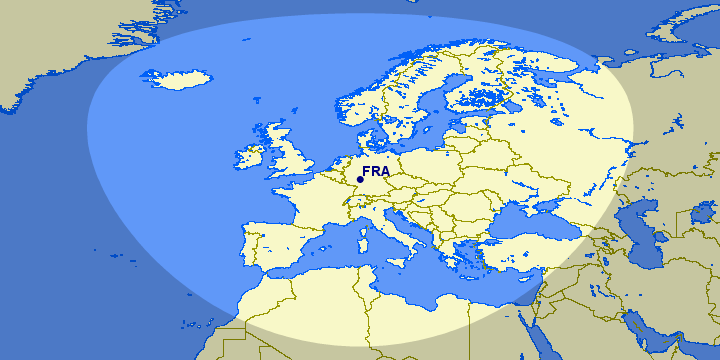
-

- lancelot07
- Posts: 1078
- Joined:
Re: A320neo/737MAX have too much range?
Just by looking at the size and passenger capacity of the aircraft it would make more sense to compare modern 737/A320s with the 707 or DC8 than the ancient 737-100.
Re: A320neo/737MAX have too much range?
One should not forget, that maximum range is different to maximum range with maximum payload. And with max. payload the 737/A320 are between 2000-2500nm. If you want to have a plane with an effective 1500nm range under all weather conditions, with max. payload and reserves, it would also need about 1800-2000nm chart range. Not much of a difference to the 737/A320.
-
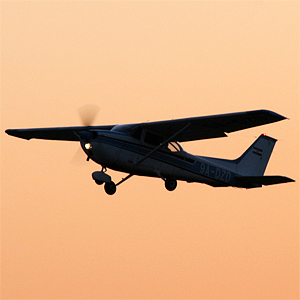
-
TripleDelta
Screener
- Posts: 1283
- Joined:
Re: A320neo/737MAX have too much range?
kitplane01 wrote:For most flights, these planes have an excess of range capability, which means a reduced efficiency. A "right sized" plane might have the same passenger capacity, but a range of only 1,500 nm. It would require a lower maximum possible gross weight, and therefore a lighter structure and smaller wings. It would be more efficient at these shorter flights (and almost all flights are shorter flights).
There was one such attempt in the 70s: the Dassault Mercure. The idea was to create a 737-sized aircraft (eventually seating 150) that would be optimized for very short inter-European haul, with a target range of just 1000 km (round about 550 NM). Even though the general climate of the time had a lot to do with its eventual failure, even Dassault admits "a preference on the part of the airlines for a versatile aircraft capable of providing short- and medium-haul service" (http://www.dassault-aviation.com/en/pas ... t/mercure/). In the end, only 11 examples went into commercial service with only one carrier (Air Inter).
Re: A320neo/737MAX have too much range?
When the 737-100 had only 1,500nm range, there were quite a few narrow body frames around with more range, the 707 and the DC8 for example.
Furthermore, the version sold in the USA, the 737-200 had around 2,000nm range. The 737 did start to sell in serious numbers when its range had increased to around 2,500 nm..
Furthermore, the version sold in the USA, the 737-200 had around 2,000nm range. The 737 did start to sell in serious numbers when its range had increased to around 2,500 nm..
Re: A320neo/737MAX have too much range?
Remember, back in the 60s the 707 was for longer routes, 727 / 720 for medium and 737 for short haul. The 727 disappeared as did the 757 in the end, so in the 2000s a 3500nm+ 737 makes sense.
Re: A320neo/737MAX have too much range?
kitplane01 wrote:How much more efficiency might a "right sized" plane have over these planes with their excess range capability?
Isn't that what the E-jets and C-Series are for? We are already seeing those take over the low end of the capacity spectrum at some major carriers.
-

- DocLightning
- Posts: 22843
- Joined:
Re: A320neo/737MAX have too much range?
seabosdca wrote:As I think you know, Boeing and Airbus are both very deliberate about choosing the range specification for their products, and they do so in the way that their analysis tells them will maximize profitability of the aircraft.
Well, they are and they aren't. When Airbus went to re-engine the A320, they left as much of the airplane alone as possible. With engines that burn 12% less fuel that necessarily means about 12% more range. The only way to reduce the range would be to cut the size of the fuel tanks, but that would not offer any advantage (it would actually add weight because you'd have to put a bulkhead in the wings) in payload or efficiency.
So they left it as-is with the improved range for airlines to use if they wanted. Besides, they did intentionally increase the range for the A321LR to give it transatlantic legs. Looks as if Aer Lingus and Icelandair are already interested.
-

- Newbiepilot
- Posts: 3646
- Joined:
Re: A320neo/737MAX have too much range?
I love this topic. Airplanes flying at their maximim range and payload capabilities attract a lot of attention. However very few 737s and A320s are taking off at max takeoff weight on a given day. Many airlines will have a few routes that test the maximum range, but most planes aren't flying long sectors.
What I hear most from fleet planners is that while extra range is appreciated since it offers more flexibility, airlines don't want more range and payload at the expense of short to medium range fuel burn. A few 737s in the fleet might be flying 2500 mile routes, but if most of the flights are 600-1400 miles, that is where the airplane needs to be optimized. If Boeing or Airbus increased payload too much on the narrowbodies, smaller airplanes like the CSeries are going to undercut them on cost. The range and payload curves have already made the 737-7 and A319neo unpopular. The planes are simply too heavy and have too much performance for the amount of revenue they can earn. The A320 payload performance hit a sweet spot where it can fly transcon in the United States and any route in continental Europe or within China. More range is appreciated but certainly not at the expense of higher OEW.
The average 737NG and A320 flight is between 900 and 1000 miles. The 737 Classics were around 500-600 miles.
What I hear most from fleet planners is that while extra range is appreciated since it offers more flexibility, airlines don't want more range and payload at the expense of short to medium range fuel burn. A few 737s in the fleet might be flying 2500 mile routes, but if most of the flights are 600-1400 miles, that is where the airplane needs to be optimized. If Boeing or Airbus increased payload too much on the narrowbodies, smaller airplanes like the CSeries are going to undercut them on cost. The range and payload curves have already made the 737-7 and A319neo unpopular. The planes are simply too heavy and have too much performance for the amount of revenue they can earn. The A320 payload performance hit a sweet spot where it can fly transcon in the United States and any route in continental Europe or within China. More range is appreciated but certainly not at the expense of higher OEW.
PatrickZ80 wrote:Maybe not all sectors flown on the 737 are as long as 3.500 NM, but by far most of them are longer than 1.500 NM. From Europe this would mean the Canary Islands, a popular holiday destination, would be out of range. I think the current 737 really needs it's range. The 737-100 didn't have it, but back then we didn't know any better. Now we do.
The average 737NG and A320 flight is between 900 and 1000 miles. The 737 Classics were around 500-600 miles.
Re: A320neo/737MAX have too much range?
The MAIN argument for C series ........
-

- Channex757
- Posts: 2423
- Joined:
Re: A320neo/737MAX have too much range?
The important phrase here is 'versatile'.
If the OEMs were to cripple their designs in an attempt to save weight (a dubious proposition at best) then that versatility is lost. A plane might be flying 500 mile legs Monday to Friday, then at the weekend the airline could be flying it on 2000 mile charters. Just one example of why crippling a design has a negative impact overall. Airlines like Aer Lingus use their A320 fleet on relatively short routes during the working week but at night and at weekends they push further out to Tenerife or Turkey. That would be business lost to charter carriers instead.
The cost of having that versatility is also much lower than in previous times. Engine technology and ability to 'throttle push' to higher thrust without needing to dismantle and replace components keeps the costs down.
If the OEMs were to cripple their designs in an attempt to save weight (a dubious proposition at best) then that versatility is lost. A plane might be flying 500 mile legs Monday to Friday, then at the weekend the airline could be flying it on 2000 mile charters. Just one example of why crippling a design has a negative impact overall. Airlines like Aer Lingus use their A320 fleet on relatively short routes during the working week but at night and at weekends they push further out to Tenerife or Turkey. That would be business lost to charter carriers instead.
The cost of having that versatility is also much lower than in previous times. Engine technology and ability to 'throttle push' to higher thrust without needing to dismantle and replace components keeps the costs down.
Re: A320neo/737MAX have too much range?
WorldspotterPL wrote:You are thinking US and coast to coast (which these planes were designed for apparently) - if you think Europe (eg 1500nm ex FRA), kitplane has a valid point. I quickly checked, LH does 71% of their seats under 2600 km (Oct 2016 schedules data).
That's an interesting post. Data! Graphics!
But what percentage of total worldwide narrowbody flights does LH represent? Is it even 2%? More appropriately, what is the median stage length of worldwide narrowbody ops in the 150-200 seat range? And, as others have mentioned, what are the potential gains in fuel efficiency from lighter/shorter range aircraft vs. costs of a second type? When the 737-100 went into production there were DC-8s and 707s for the 'long' routes - many routes that are flown by 737s, A321s, and 757s today.
Re: A320neo/737MAX have too much range?
kitplane01 wrote:It would require a lower maximum possible gross weight, and therefore a lighter structure and smaller wings. It would be more efficient at these shorter flights (and almost all flights are shorter flights).
How much more efficiency might a "right sized" plane have over these planes with their excess range capability?
The efficiency gains would likely be quite small. The relevant question is:
-what delta to MTOW for 1500nm range at first cut?
-what delta to OEW, engine thrust, and operating cost once the "wing loop" is applied following that first cut?
Take the MAX -8. Its catalog OEW should be a few ton higher than the 738's 91,400lbs - say 95,000lbs.
Add the weight of 160 pax @210lbs each and you're up to 129,000lbs.
Remaining fuel weight to MTOW (181,200lbs) is 52,000lbs.
Cut that in half and your MTOW is ~154,000 lbs.
A decent "rule of thumb" is 1ton of structure for every 10 tons of MTOW, so we could reduce OEW by ~2,600lbs at first cut.
If we follow the wing loop all the way down (less wing area, MLG, engine weight), maybe you can shave 5,000lbs off OEW.
That will end up being only ~4% of average cruising weight on a 1,500nm mission.
If you save ~5% of fuel on that mission, and we assume fuel is ~30% of DOC, that's -1.5% trip cost delta.
By the time you aggregate engine mx, acquisition cost, and fees, maybe you get another -1.5% trip cost delta.
So let's call it -3% total DOC delta for the short-range 737ish plane.
Given the importance of user fees, ticketing expense, baggage handling, gate agents etc. on short-range trips, I'd be surprise if you could pass even 2% of ticket price savings on to your passengers or shareholders.
Meanwhile, you've created two separate plane types for similar capacities, which will complicate crew training, utilization factors, acquisition cost economies of scale.
Doesn't seem worth it.
Short/mid range planes simply don't carry enough penalty for carrying fuel for slashing range to show great returns.
This why, btw, I think the MoM/NMA will end up being a good value proposition for Boeing and airlines. At 2025 engine/aero tech, the penalty for even ~4,500nm nominal range isn't huge compared to a ~3,000nm optimal single-aisle. Each advance in engine/aero tech makes the range penalty smaller.
Re: A320neo/737MAX have too much range?
MIflyer12 wrote:But what percentage of total worldwide narrowbody flights does LH represent? Is it even 2%? More appropriately, what is the median stage length of worldwide narrowbody ops in the 150-200 seat range?
That LH sector length estimate seems high but if true I'd guess the rest of the world flies shorter sectors on average, given that some of the largest narrowbody fleets are held by LCC's and we know that the LCC business model is based on short segments and high utilization. For example, Ryanair, Easyjet, Southwest and AirAsia, all have an average sector length somewhere between 600nm and 700nm.
-

- Revelation
- Posts: 29620
- Joined:
Re: A320neo/737MAX have too much range?
seabosdca wrote:Pair that with the fact that it was considerably less expensive to increase range than to remove significant weight, and the decisions make sense.
Personally, I think this is the current trend. It seems clear to me that it's relatively straight-forward to find the key elements in a design that need just a bit more strength to support a higher MTOW which leads to increased payload-range. It's far more costly to go through a design and find the things that can be removed, and there's so many things that have built-in margin that is just not economically feasible to remove.
Newbiepilot wrote:What I hear most from fleet planners is that while extra range is appreciated since it offers more flexibility, airlines don't want more range and payload at the expense of short to medium range fuel burn. A few 737s in the fleet might be flying 2500 mile routes, but if most of the flights are 600-1400 miles, that is where the airplane needs to be optimized. If Boeing or Airbus increased payload too much on the narrowbodies, smaller airplanes like the CSeries are going to undercut them on cost.
I think the cross-over is shifting upwards in time. The C series is coming out of the box with 3,100 nm brochure range. I think airlines, along with Tesla owners, have a fair amount of 'range anxiety' that must be overcome.
Lightsaber and others have pointed out that jet engines are not as efficient when they are "unloaded". We see things like IAE engines that work best for A321 whereas CFM engines work best for A319 and A320. The efficiency band is not as broad as some like to make it out to be.
One thing I see with various forms of high-tech is that as we optimize things for sexy brochure numbers we tend to make narrower ranges of peak efficiency instead of broader ranges of good efficiency.
-

- kitplane01
- Posts: 2917
- Joined:
Re: A320neo/737MAX have too much range?
Matt6461 wrote:If you save ~5% of fuel on that mission, and we assume fuel is ~30% of DOC, that's -1.5% trip cost delta.
By the time you aggregate engine mx, acquisition cost, and fees, maybe you get another -1.5% trip cost delta.
So let's call it -3% total DOC delta for the short-range 737ish plane.
I would not long-term plan on low fuel prices, but who knows for sure?
But I thought 3% was rather huge in this world. It's about the size of an airline profit margin. It's about the size of the difference in operating cost between the A321neo and the 737-9MAX (give or take on both).
Maybe Southwest would not give up their one-type model for 3%, but I bet it would influence ordering at Delta and American.
-

- kitplane01
- Posts: 2917
- Joined:
Re: A320neo/737MAX have too much range?
Matt6461 wrote:kitplane01 wrote:It would require a lower maximum possible gross weight, and therefore a lighter structure and smaller wings. It would be more efficient at these shorter flights (and almost all flights are shorter flights).
How much more efficiency might a "right sized" plane have over these planes with their excess range capability?
The efficiency gains would likely be quite small. The relevant question is:
-what delta to MTOW for 1500nm range at first cut?
-what delta to OEW, engine thrust, and operating cost once the "wing loop" is applied following that first cut?
Take the MAX -8. Its catalog OEW should be a few ton higher than the 738's 91,400lbs - say 95,000lbs.
Add the weight of 160 pax @210lbs each and you're up to 129,000lbs.
Remaining fuel weight to MTOW (181,200lbs) is 52,000lbs.
Cut that in half and your MTOW is ~154,000 lbs.
A decent "rule of thumb" is 1ton of structure for every 10 tons of MTOW, so we could reduce OEW by ~2,600lbs at first cut.
If we follow the wing loop all the way down (less wing area, MLG, engine weight), maybe you can shave 5,000lbs off OEW.
That will end up being only ~4% of average cruising weight on a 1,500nm mission.
If you save ~5% of fuel on that mission, and we assume fuel is ~30% of DOC, that's -1.5% trip cost delta.
By the time you aggregate engine mx, acquisition cost, and fees, maybe you get another -1.5% trip cost delta.
So let's call it -3% total DOC delta for the short-range 737ish plane.
Given the importance of user fees, ticketing expense, baggage handling, gate agents etc. on short-range trips, I'd be surprise if you could pass even 2% of ticket price savings on to your passengers or shareholders.
Does anyone else have any insight into these numbers? Does this sound reasonable to others?
Re: A320neo/737MAX have too much range?
kitplane01 wrote:But I thought 3% was rather huge in this world. It's about the size of an airline profit margin. It's about the size of the difference in operating cost between the A321neo and the 737-9MAX (give or take on both).
Maybe Southwest would not give up their one-type model for 3%, but I bet it would influence ordering at Delta and American.
It's a good point and one I thought about addressing after I posted. You might be right that a huge airline like the US3, which operates many subtypes, could come out significantly ahead by ordering both MAX/NEO and a shorter-range plane.
The problem is that no OEM would have sufficient grounds to build that plane. Why? Well acquisition/ownership cost is up around one-third of DOC with $2 gas, still one-quarter at $3 gas.
A plane optimized for 1500nm range would have to be clean sheet, requiring an OEM investment of ~$15bn.
In order to recoup that investment, the OEM would have to foresee either a price premium or sales numbers premium over their current offerings sufficient to recoup $15bn plus a high return (given the riskiness of airliner programs).
Charging a price premium sufficient for ~$25bn in profits would quickly wipe out the airline's ~2-3% cost savings.
It would be highly unlikely that a 2-3% cost savings would stimulate overall air travel demand such that additional sales beyond MAX/NEO would justify the program.
kitplane01 wrote:Does anyone else have any insight into these numbers? Does this sound reasonable to others?
You'll be disappointed to find that every one here has firm opinions but very few are willing to do math or even arithmetic. Hope somebody else steps up with their own numbers but I wouldn't hold your breath.
Here's a link to some numerical analysis of the operating cost parameters for MAX/NEO:
http://airinsight.com/wp-content/upload ... 052016.pdf
Re the OEW/MTOW figures I used - got those from Wikipedia, which I assume cited to Boeing's ACAP documents. Didn't check those cites though.
Re: A320neo/737MAX have too much range?
How much weight you could save is hard to answer. If you can dig deeply into new production methods like cold cured composites, additive manufacturing and newest alloys you can maybe achieve up to 10% weight reduction compared to the highly efficient and optimized 737-8. For a short mission <700nm the weight advantage transforms into 5% fuel burn saved at best. With some aero tweaks and such, optimized engine you might get the fuel burn advantage up to 8-10%. With cheap gas you might be looking at a trip cost reduction of 3%, with expensive gas 5-6%.
However this ignores the capital costs, as this plane will be more expensive, list price would probably be around 30% higher, so your mission capital costs go up by 30%, which is more than what you save on fuel, even with the expensive fuel calculation. This also ignores the problem of fleet utilisation.
However this ignores the capital costs, as this plane will be more expensive, list price would probably be around 30% higher, so your mission capital costs go up by 30%, which is more than what you save on fuel, even with the expensive fuel calculation. This also ignores the problem of fleet utilisation.
-

- Revelation
- Posts: 29620
- Joined:
Re: A320neo/737MAX have too much range?
kitplane01 wrote:But I thought 3% was rather huge in this world. It's about the size of an airline profit margin. It's about the size of the difference in operating cost between the A321neo and the 737-9MAX (give or take on both).
Maybe Southwest would not give up their one-type model for 3%, but I bet it would influence ordering at Delta and American.
But the 3% gain is coming with a lot of pain. Reading Matt's post:
A decent "rule of thumb" is 1ton of structure for every 10 tons of MTOW, so we could reduce OEW by ~2,600lbs at first cut.
If we follow the wing loop all the way down (less wing area, MLG, engine weight), maybe you can shave 5,000lbs off OEW.
We're talking about at the minimum all-new wings, and then a lot of knock-on changes to make the wing changes pay off. Something akin to the 777X program in terms of scope. All this to get an aircraft with high efficiency but less capability. All this to compete against products you already sell.
It's pretty instructive to see how BBD had the clean sheet and decided to go for an a/c with 3,100 nm range rather than something with less range and thus more efficiency for shorter missions.
Matt6461 wrote:You'll be disappointed to find that every one here has firm opinions but very few are willing to do math or even arithmetic. Hope somebody else steps up with their own numbers but I wouldn't hold your breath.
I for one appreciate the efforts you make to deal with things numerically. Since this is a pleasure-time activity I follow along but don't cross-check. I'm glad that you find it pleasurable enough to do the math. I haven't done the things you've done to get the key formulas into my working knowledge. That space is occupied by decades of software engineering knowledge, which is hard enough for me to retain without having aeronautical formulas competing for space!
-

- frmrCapCadet
- Posts: 6370
- Joined:
Re: A320neo/737MAX have too much range?
A similar discussion is going on at one of my boating sights, and similar answer. The largest optimized engine is generally the best value all things considered.
Or in autos, the Smart Car simply is not. For the same (!!!) amount of money a larger, safer, more comfortable that can carry a passenger or two and the groceries is the better buy.
It has been implied in some of the posts, but is the beefed up structure for the longer distance heavier model also utilized as the same plane makes a lot more landings and takeoffs at a lesser weight? Which is not to say that the C series is optimized for some customers.
Or in autos, the Smart Car simply is not. For the same (!!!) amount of money a larger, safer, more comfortable that can carry a passenger or two and the groceries is the better buy.
It has been implied in some of the posts, but is the beefed up structure for the longer distance heavier model also utilized as the same plane makes a lot more landings and takeoffs at a lesser weight? Which is not to say that the C series is optimized for some customers.
Re: A320neo/737MAX have too much range?
TripleDelta wrote:[...]There was one such attempt in the 70s: the Dassault Mercure.[...]
That one had just been ahead of it's time. Anything LCCs are doing today had been totally illegal back then and the business model of the legacies had been completely different. Because of the extremely restrictive regulations the Mercure had been of no practical use during those days.
However, nobody dares to take the risk to come up with a lean alternative to the obese and overbuilt 737/320/CSeries etc. Maybe the ATR concept (anything more than necessary is waste) comes close to the Mercure. In recent years the ATRs have clearly outsold their more capable and more sophisticated (read: overbuilt) turboprop competitors.
-

-
lightsaber
Moderator
- Posts: 24641
- Joined:
Re: A320neo/737MAX have too much range?
The main point has already been made. To gain efficiency, weight must be removed. Boeing and Airbus decided on time to market. That meant forgoing on a new wing. Only a new wing would provide the efficiency advantages speculated.
Airbus needed a selling point for the NEO. They made the decision to optimize for the 2 hour mission with the NEO up from 1.25 hours of the original CEO. Why? They needed a clear benefit for a set of missions to sell. The fact the NEO beat promise... Is another discussion.
The 737NG was sized for minimal TCON range. Winglets (now scimitar Winglets) and a few engine and airframe PIPs dramatically improved the range. The MAX adds a little more.range.
Yes, if less range us needed the C-series and E2. The E2-195 will test the OP theory. A compromised design based on giving up range for efficiency.
To all:
But there are minimum ranges:
2300nm for a mid-America hub to serve both coasts
2500nm ATL to the west coast all winter
2950nm TCON
3100nm West coast to Hawaii
390nmnear-TATL
The Pratt NEO has 3700nm. An engine PIP, airframe aero, and small MTOW takes it TATL.
1500nm is regional jet range. An aircraft is usually peak efficient at about 75% of its range for a payload. So 3,700, with winds, means taking an efficiency hit at beyond 2,000nm with winds. So we'll optimized for US flights.
Only on flights less than 1,000 nm are the MAX and NEO too heavy for optimal. I think they'll continue to do well...
Lightsaber
Airbus needed a selling point for the NEO. They made the decision to optimize for the 2 hour mission with the NEO up from 1.25 hours of the original CEO. Why? They needed a clear benefit for a set of missions to sell. The fact the NEO beat promise... Is another discussion.
The 737NG was sized for minimal TCON range. Winglets (now scimitar Winglets) and a few engine and airframe PIPs dramatically improved the range. The MAX adds a little more.range.
airbazar wrote:kitplane01 wrote:How much more efficiency might a "right sized" plane have over these planes with their excess range capability?
Isn't that what the E-jets and C-Series are for? We are already seeing those take over the low end of the capacity spectrum at some major carriers.
Yes, if less range us needed the C-series and E2. The E2-195 will test the OP theory. A compromised design based on giving up range for efficiency.
To all:
But there are minimum ranges:
2300nm for a mid-America hub to serve both coasts
2500nm ATL to the west coast all winter
2950nm TCON
3100nm West coast to Hawaii
390nmnear-TATL
The Pratt NEO has 3700nm. An engine PIP, airframe aero, and small MTOW takes it TATL.
1500nm is regional jet range. An aircraft is usually peak efficient at about 75% of its range for a payload. So 3,700, with winds, means taking an efficiency hit at beyond 2,000nm with winds. So we'll optimized for US flights.
Only on flights less than 1,000 nm are the MAX and NEO too heavy for optimal. I think they'll continue to do well...
Lightsaber
Re: A320neo/737MAX have too much range?
seabosdca wrote:As I think you know, Boeing and Airbus are both very deliberate about choosing the range specification for their products, and they do so in the way that their analysis tells them will maximize profitability of the aircraft.
There are three big geographical narrowbody markets (plus, of course, smaller markets all over the rest of the world): North America, Europe, and South/Southeast/East Asia.
Of the three, only Europe has carriers that just don't have any use for longer range in their narrowbody fleets.
Of course, North America has transcontinental and Hawaii flights to worry about, and the MAX/neo are the first narrowbodies more efficient than a 757 that will be able to fly all of those flights without headaches, restrictions, or bad-weather stops. The North America market has looked this way for many years, since 757s started replacing old-generation widebodies on big domestic routes.
But the Asia market is fragmenting just like North America did when the 757 and then the A320/737NG appeared. The neo/MAX will hasten that process, where hub-to-hub routes that have used A330s and 777s will be given higher frequency and split into more point-to-hub routes using narrowbodies. The Asia region is big enough that many players there can easily make use of the 8ish-hour range of the new aircraft. Think more flights between the subcontinent and East Asia, between SE Asia and Oceania, or between far SE Asia and Japan or Korea.
Pair that with the fact that it was considerably less expensive to increase range than to remove significant weight, and the decisions make sense.
I do think that if Bombardier can find the resources to develop a CS500 then that aircraft will be extremely attractive to a lot of European customers.
Wow, I learned something new today. According to seabosdca, South America does not qualify as a market. If only he knew most of the routes intra South America are flown by A320 family (Avianca / LAN) and 737 (Copa). Oh well, according to him we in South America don't count....
Re: A320neo/737MAX have too much range?
Thanks all. I've really enjoyed this thread. I thought about this same topic a couple of weeks ago. I flew ALB (Albany NY) to MDW (Midway, IL) to TUS (Tucson, AZ). All on the same plane ( I guess tag flight is the term)... That same plane (738) finished in LAS (Las Vegas, NV).
So the trip legs looked like this:
ALB to MDW = 830 miles (full no empty seats... so operating close to MTOW)
MDW to TUS = 1800 miles (full no empty seats... so operating close to MTOW)
TUS to LAS = 420 miles (no idea of # of seats sold, but I saw a ton of people lined up as I departed the plane.. so at least near full).
This is the very first time on this route (I've flown it 50 times or so in 11 years) that I've stayed on the same plane... Previous, there was only a plane change in MDW. Interesting.
So, with optimized planes.. You wouldn't have this flexibility.. You'd have to change planes, crews etc....
So the trip legs looked like this:
ALB to MDW = 830 miles (full no empty seats... so operating close to MTOW)
MDW to TUS = 1800 miles (full no empty seats... so operating close to MTOW)
TUS to LAS = 420 miles (no idea of # of seats sold, but I saw a ton of people lined up as I departed the plane.. so at least near full).
This is the very first time on this route (I've flown it 50 times or so in 11 years) that I've stayed on the same plane... Previous, there was only a plane change in MDW. Interesting.
So, with optimized planes.. You wouldn't have this flexibility.. You'd have to change planes, crews etc....
Re: A320neo/737MAX have too much range?
kitplane01 wrote:A320neo/737MAX have too much range?.
IS there such a thing?
Re: A320neo/737MAX have too much range?
Don't look at mission count, look at operating hours by segment distance. Longer segments tend to run the hourly count up. For larger fleets, airframe hours is a better measure of range utilization. You'll need roughly 3-4x more frames to cover the same number of "trips" or pax for the longer segments than shorter ones.
Re: A320neo/737MAX have too much range?
720B wrote:Wow, I learned something new today. According to seabosdca, South America does not qualify as a market. If only he knew most of the routes intra South America are flown by A320 family (Avianca / LAN) and 737 (Copa). Oh well, according to him we in South America don't count....
You didn't read my post very carefully. I said there were three big markets, and smaller ones all over the rest of the world. The South American market is an order of magnitude smaller than any of the three I mentioned. That doesn't mean it's not real or that there's anything wrong with it. It's just smaller.
It's just a fact of life that the biggest markets are going to determine how the aircraft get engineered for the most part.
-

- kitplane01
- Posts: 2917
- Joined:
Re: A320neo/737MAX have too much range?
Matt6461 wrote:kitplane01 wrote:But I thought 3% was rather huge in this world. It's about the size of an airline profit margin. It's about the size of the difference in operating cost between the A321neo and the 737-9MAX (give or take on both).
Maybe Southwest would not give up their one-type model for 3%, but I bet it would influence ordering at Delta and American.
It's a good point and one I thought about addressing after I posted. You might be right that a huge airline like the US3, which operates many subtypes, could come out significantly ahead by ordering both MAX/NEO and a shorter-range plane.
The problem is that no OEM would have sufficient grounds to build that plane.
But Bombardier, Irkuk, and Comac are building planes in the neighborhood of the A320/737.
The Bombardier has a range of over 3,000 nm. Presumably they carefully considered this and other questions, and decided on the range they should offer. I believe that are making their best guess at market-optimizing decisions.
The Comac C919 has a range of only 2,200 nm. That's only about 2/3 the A320/737, and would constitute evidence that smart people thought a lower range aircraft was appropriate only if you thought Comac was "smart people" doing market based decisions.
It would be awesome if either Boeing or Airbus had a more efficient, lower range offering than the other. Image a 737-9MAX with a range of only 2,000nm but a direct operating cost of only 95% that of the 3,500 nm range A321. It would be better if the airlines had a real choice, instead of two near-same-functionality aircraft.
-

- kitplane01
- Posts: 2917
- Joined:
Re: A320neo/737MAX have too much range?
Matt6461 wrote:The problem is that no OEM would have sufficient grounds to build that plane. Why? Well acquisition/ownership cost is up around one-third of DOC with $2 gas, still one-quarter at $3 gas.
A plane optimized for 1500nm range would have to be clean sheet, requiring an OEM investment of ~$15bn.
In order to recoup that investment, the OEM would have to foresee either a price premium or sales numbers premium over their current offerings sufficient to recoup $15bn plus a high return (given the riskiness of airliner programs).
Charging a price premium sufficient for ~$25bn in profits would quickly wipe out the airline's ~2-3% cost savings.
That's only true now. Eventually, someday there will be a clean sheet new narrow body design from a major manufacturer. I hope that plane will be optimized for the vast majority of missions that are below 1,200 nm.
Suppose Boeing had gone clean sheet new design instead of a re-engine 737. I wonder what they would have done. And I wonder if they would be brave/foolish enough to try something new (optimized for the lower range) instead of just matching the Airbus offering.
-

- kitplane01
- Posts: 2917
- Joined:
Re: A320neo/737MAX have too much range?
lightsaber wrote:1500nm is regional jet range. An aircraft is usually peak efficient at about 75% of its range for a payload.
That's kind of my point. NYC ->Chicago, London->Frankfurt, and Shanghai->Beijing are well less than 1500nm, but need more size than a regional jet can provide. These very common routes have no plane optimized for them!
lightsaber wrote:Only on flights less than 1,000 nm are the MAX and NEO too heavy for optimal.
If that's true it does explain away my thesis. But at even a 5% inefficiency, it's worth doing (especially if you're doing a clean sheet design anyway.)
lightsaber wrote:I think they'll continue to do well...
Absolutely. But as aviation continues to grow larger, there is more space for more types of aircraft.
Re: A320neo/737MAX have too much range?
5% more efficient on a trip is only good if the capital costs are similar and if the fleet utilisation does not take a hit.
Re: A320neo/737MAX have too much range?
Keesje's TP400 powered turboliner would absolutely destroy anything in the "up to 1500nm" sector... the lack of vision by today's carriers/manufacturer's is truly pathetic...
Re: A320neo/737MAX have too much range?
SCAT15F wrote:Keesje's TP400 powered turboliner would absolutely destroy anything in the "up to 1500nm" sector... the lack of vision by today's carriers/manufacturer's is truly pathetic...
Well....not necessarily. How many A400's are in service? As far as I know, not very many...and the engines seem to be a fairly constant thorn. That's one thing about a military engine...it doesn't do nearly the work that a commercial airline engine does...day in, day out. It's not a huge deal if a freighter goes inop, but the poo really hits the fan if a commercial airliner is more than a few minutes late leaving the gate.
As well, what are the specs for the TP400's? How much more efficient are they than the GTF's or LEAP's? I'd be willing to bet that they aren't as quiet or reliable...which is fine, since they don't really have to be in a military application.
I'd say the GTF and the LEAP are as close to the bleeding edge as it's possible to be. In fact, they are the bleeding edge.
As for the range issue, I don't have any numbers but I'm willing to bet that the maximum range of most aircraft doesn't include a full passenger load. What that means, is aircraft with a lot of versatility. You can haul a lot of people and/or payload, a shorter distance or fewer people, and/or parcels, a long distance.
Basically, more range gives airlines the ability to choose between fuel and passengers.
-

- Revelation
- Posts: 29620
- Joined:
Re: A320neo/737MAX have too much range?
kitplane01 wrote:That's only true now. Eventually, someday there will be a clean sheet new narrow body design from a major manufacturer. I hope that plane will be optimized for the vast majority of missions that are below 1,200 nm.
Suppose Boeing had gone clean sheet new design instead of a re-engine 737. I wonder what they would have done. And I wonder if they would be brave/foolish enough to try something new (optimized for the lower range) instead of just matching the Airbus offering.
Thing is, 737s are already optimized for ranges less than the A320 and are getting their asses kicked in the marketplace.
The MD-90 had the same engines as the A320 and was lighter and shorter ranged but got its ass kicked out of the marketplace.
kitplane01 wrote:That's kind of my point. NYC ->Chicago, London->Frankfurt, and Shanghai->Beijing are well less than 1500nm, but need more size than a regional jet can provide. These very common routes have no plane optimized for them!
...
But as aviation continues to grow larger, there is more space for more types of aircraft.
The problem is that optimization for the shorter route produces an airplane that cannot do a significant number of routes in your network. The airlines don't want to have separate fleets for 1500 nm missions vs 3000 nm missions. The engine vendors don't see the value in having different engines for these being unique market segments (beyond the already existing RJ product segment). The science says that since you consume so much energy in the climb it's wise to amortize it against a longer cruise. Things might change as aviation grows, but there's a lot of strong reasons why the market has the shape it now has.
-

- Rajahdhani
- Posts: 1026
- Joined:
Re: A320neo/737MAX have too much range?
seahawk wrote:How much weight you could save is hard to answer. If you can dig deeply into new production methods like cold cured composites, additive manufacturing and newest alloys you can maybe achieve up to 10% weight reduction compared to the highly efficient and optimized 737-8. For a short mission <700nm the weight advantage transforms into 5% fuel burn saved at best. With some aero tweaks and such, optimized engine you might get the fuel burn advantage up to 8-10%. With cheap gas you might be looking at a trip cost reduction of 3%, with expensive gas 5-6%.
However this ignores the capital costs, as this plane will be more expensive, list price would probably be around 30% higher, so your mission capital costs go up by 30%, which is more than what you save on fuel, even with the expensive fuel calculation. This also ignores the problem of fleet utilization.
To add, from the perspective of the larger aircraft (737/A32X) - if these aircraft are not performing their maximum range - they would not need their maximum fuel either. On a short hop, a 737 will likely be fueled lightly and work accordingly.
Re: A320neo/737MAX have too much range?
lightsaber wrote:Only on flights less than 1,000 nm are the MAX and NEO too heavy for optimal. I think they'll continue to do well...
But that's the point of this discussion, is it not? The vast majority of NB frames do not fly sectors longer than 1000nm.
But then again this is the same exact discussion that we had a few months ago regarding the Emiratization of the new large twin engine planes
-

- Rajahdhani
- Posts: 1026
- Joined:
Re: A320neo/737MAX have too much range?
xdlx wrote:The MAIN argument for C series ........
Never have I seen, a better example.
There is also another part of the market equation that we seem to be forgetting;
- the demand for frequency (and/or allowing greater connections to current hubs/supporting the current hub structure).
If the aircraft has to have a 1500nm range, it would be sized appropriately to handle the lower end of the 737 demand (to meet the customer demand on the product), but have to be superior in costs (for Bombardier's sake - not degrade a price premium, if there is one, - and for everyone's sake - better fuel and operating economies). The issues of costs become apparent, because what airlines will have to give up, is the maximums of their capacity (or, the oppurtunity cost of the capacity offered by the 737/A32Xs and the low costs of operating larger varients within the type, at similar costs) and then be forced to add frequencies in order to compete against those that already do.
Now, let's consider what the market is already explaining to us;
Of the A320NEO Program;
58 - A319NEOs on Order. (140-160 seats)
3,385 - A320NEOs on Order. (165-195 seats)
1,375 - A321NEOs on Order. (206-240 seats).
So, if you're looking at the EADS market - you see that the majority of the orders fall to the A320, and the A321, with anemic sales of the A319NEO.
At present, Bombardier;
123 - CS100s on Order. (108-127 seats).
247 - CS300s on Order. (130-160 seats).
Understandably so, Bombardier understands where the C-Series could make a major impact. Looking at EADS sales (alone), you can see where the market lies, capacity wise.
Consider how both Boeing and EADS reacted, and you'll see the real concerns of both the airlines, and the manufacturers; costs, and price premiums.
http://www.theglobeandmail.com/report-on-business/bombardier-offered-c-series-stake-for-a-song-airbus-sales-chief-says/article30219126/
Mr. Leahy has long sneered at the possibility that Bombardier could build a plane to challenge Boeing and Airbus, even as Airbus was offering heavy discounts and other incentives to customers to keep the Canadian plane from getting a foothold in the market. Though he has been quick to belittle both Bombardier and the C Series, his colleagues have been more measured. The company’s chief operating officer has admitted that Airbus takes seriously the threat posed by Bombardier’s larger C Series, the 130- to 160-seat CS300, as well as the possibility an even larger version could eventually be introduced.
...and then there is Leahy's comments;
https://www.flightglobal.com/news/articles/airbus-sales-chief-doubles-down-on-cseries-attack-425865/
“I could easily sell [the CSeries] for the $22 million or whatever they sold it for,” Leahy says.
“They can’t make a business about losing $7 million an airplane,” Leahy told reporters on 30 May on the sidelines of Airbus Innovation Days.
..and he has a point. Bombardier has been selling the C-Series, at a loss, in order to gain market share. The loss making part will have to come to an end, for all manufacturers concerned, precisely becuase low pricing on the C-Series, also reduces the price premium both Airbus and Boeing can command in their prices with their aircraft, to the same customers.
More telling, was Leahy's comments about where the price point was, for the the 737-Max...
"Leahy is unable to discuss Airbus pricing philosophy, so he referenced that of another competitor. Boeing, he says, would be happy to sell a 737 Max 7 in the high $30 million range or low $40 million range, with a healthy profit margin."
Now, head over to Boeing, and that $22 million dollar price tag, comes up again...
https://leehamnews.com/2016/01/21/united-chooses-737-700-over-cs100-in-big-blow-to-bombardier/
The price of the airplane. The 737-700 is now a cheap airplane for Boeing to produce and the CSeries is not. Even though we estimate that BBD’s write-off of $3.2bn in development costs enables BBD to lower the price of the CSeries by about $5m, to the upper $20m, Boeing has a fully amortized 737-700 and can still undercut the price. We’ve already heard that the price may have been in the low $20m, which we think may be aggressive, but whether it’s mid-$20m or lower, we believe Boeing would have had no problem undercutting BBD.
Both EADS and Boeing understood well, that a further sale to Bombardier would make the case for the CS500 even louder - not only in the aircraft market share that each aircraft will take, but also in the pricing that effects Boeing and EADS to have to sell their products, at lower prices, to compete. When finalized, guess what range of capacity it will fill...
Bombardier did not wait long, though, and have asked for the financial support - understanding that the CS500 would be a threat to the biggest market for both Boeing and Airbus (and potentially an ability for them to increase sales, decrease debt and remove themselves from the 'early days' pricing - and perhaps, at the cost of both Boeing and EADS) - and potentially suicide to compete against. Ballsy move, if done.
How much will it cost?
http://www.reuters.com/article/us-bombardier-cseries-jet-idUSKCN0XV2KR
A second source close to the program said it would cost $500 million to $750 million to stretch the CS300.
The CS300, however, has the capability to be expanded if the market needs it, the program head said last year.
How much is Bombardier asking for?
https://www.flightglobal.com/news/articles/ottawa-cash-could-jumpstart-new-project-bombardier-431401/
Canadian prime minister Justin Trudeau’s government is still discussing the terms of a $1 billion investment in the Montreal-based manufacturer, with one senior official recently saying it’s now a matter of “how” and not “if”. The investment would add to a $1 billion injection by the Quebec provincial government to set up a joint venture with Bombardier to manage the CSeries programme and another $1.5 billion investment by Quebec pension fund manager CPDQ in Bombardier Transportation, the company's rail division.
On the airline side, it also is about costs - and let's consider some of the things that is impressive about the C-Series, and how that can translate into some success;
http://www.cnn.com/2016/06/06/aviation/bombardier-cseries-cs100-swiss-first-passenger-flight/index.html
Then, Dewar mentioned that the 1 hour, 50 minute flight to Zurich would burn less than 2,900 kilograms (6,400 pounds) of fuel -- "about 35% less than an Airbus or Boeing twin [engine jetliner] would need."
http://www.routesonline.com/news/29/breaking-news/249424/swiss-to-reveal-initial-c-series-routes-early-next-year/
With its size and its low operating costs, the CS300 aircraft ideally complements the CS100 aircraft and the rest of our European fleet,” said Harry Hohmeister, chief executive officer, SWISS. “With both versions of the new C Series family of aircraft in our ranks, we can be highly flexible in tailoring capacity to demand on our European routes.”
What would have been Swiss's other options for their European fleet; operating the A32Xs (at higher fuel costs, and higher capacities, but at lower frequencies).
Re: A320neo/737MAX have too much range?
The new minimum for the class is East Coast to West Coast USA in high seasonal winds without stopping. Well it was the same back when the 737 was designed, only the 727 was the Boeing product in this "class" The 737 was a cheaper short ranged plane for regional use. Technology marches on and the 737 got engines that lift more weight and burn less fuel. So it grew into a mainline narrowbody naturally. I'm going to assume the planes after the 737max/A320max will have a new minimum of trans Atlantic with a standard density, passenger only configuration, as again engines make the increased range "free".
It also still works great for <1,500nm routes as you can still operate them quite economically, double so with a large fleet to minimize per frame costs. WN is where you should look at as evidence.
It also still works great for <1,500nm routes as you can still operate them quite economically, double so with a large fleet to minimize per frame costs. WN is where you should look at as evidence.
Re: A320neo/737MAX have too much range?
Years ago I drew a short range high volume concept with Henry Lam (kaktusdigital), ECR-20.

It has counter rotating open rotors, a 7 abreast very high density cabin with conventional seats in the back, for the elderly, young families and disabled. That last concept initiated some interesting feed-back


It has counter rotating open rotors, a 7 abreast very high density cabin with conventional seats in the back, for the elderly, young families and disabled. That last concept initiated some interesting feed-back


-

- kitplane01
- Posts: 2917
- Joined:
Re: A320neo/737MAX have too much range?
Rajahdhani wrote:
Now, let's consider what the market is already explaining to us;
Of the A320NEO Program;
58 - A319NEOs on Order. (140-160 seats)
3,385 - A320NEOs on Order. (165-195 seats)
1,375 - A321NEOs on Order. (206-240 seats).
So, if you're looking at the EADS market - you see that the majority of the orders fall to the A320, and the A321, with anemic sales of the A319NEO.
At present, Bombardier;
123 - CS100s on Order. (108-127 seats).
247 - CS300s on Order. (130-160 seats).
What your data says is that if Airbus optimizes their airplane family for the A320/A321 size, and then tries to downscale to an A319, no one will order it.
Similarly, if Bombardier optimizes their wing/tail/landing-gear for the CS300, and also offers a CS100, people will not want it as much.
That's not what I'm asking about.
I'm wondering about a plane that is not *smaller*, but has *less range* and is optimized forshort ranged mission.
Who is online
Users browsing this forum: 747d10, aga, AirbusA322, Bing [Bot], CanukinUSA, Coma993, DarkandcoldAK, Delta28L, FJL767400, h133, jagraham, Kikko19, N14AZ, potato380, ram789, southbay1, speedygonzales, UAL777UK, zkncj and 222 guests
